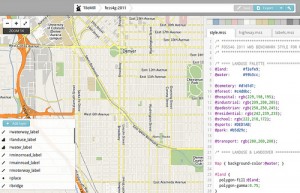The Profit Motive: Why Geospatial Open Source Needs More Naked Commercial Interest
by Brian Timoney
 It was a post of narrow import: QGIS now has more native SQL Server 2008 support. While I was happy to note the participation and support of folks I both know and like, I was nonetheless slightly irritated by a nagging thought.
It was a post of narrow import: QGIS now has more native SQL Server 2008 support. While I was happy to note the participation and support of folks I both know and like, I was nonetheless slightly irritated by a nagging thought.
“Why didn’t Microsoft do this itself already?”
A few years back I remember talking with others in the industry who had no direct interest in Microsoft one way or another, but were nonetheless excited when spatial capabilities were added to SQL Server 2008. The idea was it would ignite fresh interest in geo analysis and visualization among those who already had SQL Server but were outside the traditional GIS constituencies–they would gladly open their wallets for additional mapping magic. All boats would rise and we would happily buy beers for comrades from Redmond who finally persuaded the mainstream that geo-in-the-enterprise doesn’t mean “Enterprise GIS.”
Hasn’t quite worked out that way, has it?
So if I were a vendor of databases with spatial capabilities and I knew I wasn’t going to bother with the desktop GIS market myself, wouldn’t it be savvy to look for cost-effective opportunities to reach new users with my product–especially if I already have a free express edition with that sole purpose? I know, there are high-level vendor relationships to maintain. But really, run the funding through a re-seller or better still a non-profit (tax deduction!) and, if confronted by a business partner, express passable wonderment that the open source community has devoted resources to interoperating with your proprietary technology.
 Let’s continue the thought experiment. Imagine a slick, usable cartography tool for making web maps that happens to be open source. As it stands, it (predictably) only offers database connections to PostGIS. But why not Oracle or SQL Server connectivity? If Microsoft or Oracle reached behind their sofa cushions, I’m sure they’d find enough loose change to convince DevelopmentSeed or a freelance developer to make it happen. You might piss off partners, you might piss off internal dev teams, but if the ROI of your geospatial investments is lagging who can blame you for leveraging the open source community as, what the GeoInt folks would refer to, a force multiplier.
Let’s continue the thought experiment. Imagine a slick, usable cartography tool for making web maps that happens to be open source. As it stands, it (predictably) only offers database connections to PostGIS. But why not Oracle or SQL Server connectivity? If Microsoft or Oracle reached behind their sofa cushions, I’m sure they’d find enough loose change to convince DevelopmentSeed or a freelance developer to make it happen. You might piss off partners, you might piss off internal dev teams, but if the ROI of your geospatial investments is lagging who can blame you for leveraging the open source community as, what the GeoInt folks would refer to, a force multiplier.
* * * * * *
Next week geospatial open source will be on center stage at the FOSS4G-NA conference in Washington DC. While following quickly on the heels of the international FOSS4G conference in Denver last Fall (due to a unique set of logistical circumstances), the leading organizational role of OpenGeo (they offer Enterprise-level service and support for a pure geospatial open source stack) has drawn some criticism snark. To which I say: kudos to OpenGeo for taking the initiative. Being on the Denver organizing committee I can assert that at a certain scale relying on pure volunteerism isn’t viable. To pull together an event on short notice in such a key market will no doubt be a big win for the broader community.
* * * * * *
Chatting with Autodesk’s Geoff Zeiss at FOSS4G in Denver, he opined that the next step for geospatial open source was its embedding in vertical-specific applications. Paraphrasing Geoff, we’re beyond the defensive-sounding “it’s just as good as <insert closed-source vendor equivalent here>”. The major software packages are proven–let’s solve specific domain problems and create much larger value for end-users than merely the licensing terms of the components underneath the hood. I recalled this conversation in the context of this week’s release of PostGIS 2.0: raster and vector stored in the same database and available for cross-dataset analysis via SQL commands, 3-D distance measure, topology, and 3D and 4D indexing. In Oil & Gas, one of the premier desktop analysis packages in the industry runs on top of the Borland Database Engine: legacy would be the most polite descriptor. The potential for these new capabilities to overhaul non-intuitive workflows is enormous and I hope someone makes a ton of money doing so, because right now there are plenty of incumbents complacently collecting maintenance fees for only marginally improving 10-15 year-old codebases.
* * * * * *
The innovative maturation of open source geospatial software has been powered by the efforts of developers around the world often working for below-market rates. It may strike one as counterintuitive, but having this core community ripped off by the suit-and-$100-haircut crowd is probably more difficult given both a development process made more transparent through tools such as GitHub as well as the soft policing powers of social media. The way I see it, the costs of potential free riders is microscopic compared to the opportunity costs of our most powerful and innovative tools not being used in the service of solving society’s biggest, gnarliest, and yes, most expensive problems.
—Brian Timoney